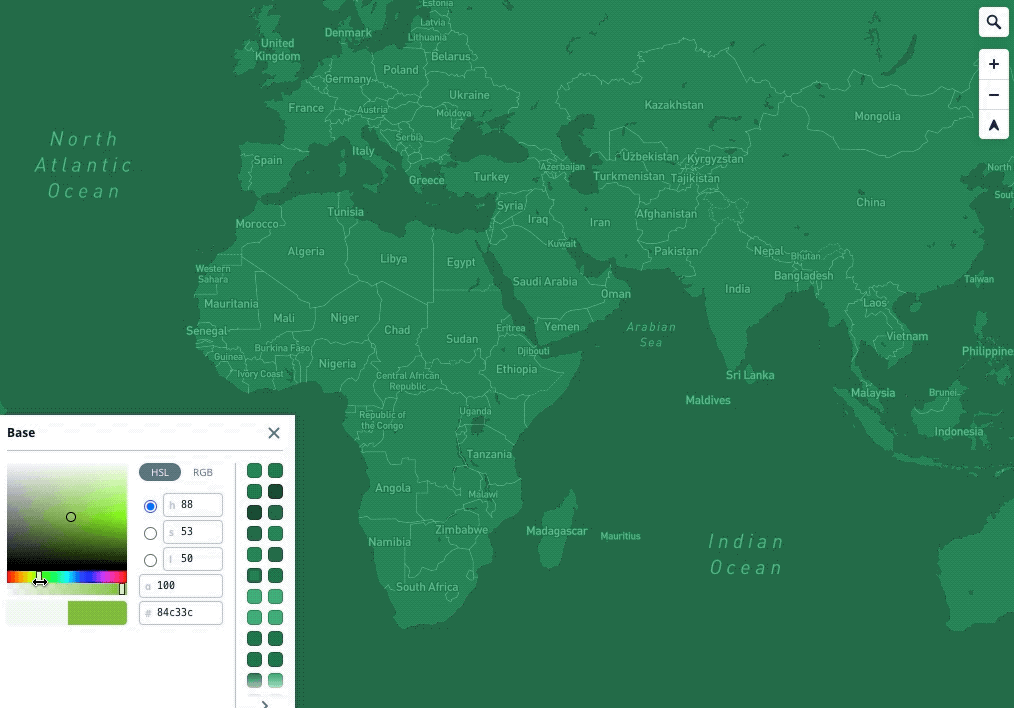Mapbox Studio

I began working on Studio in 2019, when the team was deep in an effort to compress the learning curve for new users.
In a Mapbox map, the building block is a layer. Layers are familiar if you're coming from ArcGis, but building a map layer by layer is a tedious act of love. A basemap with lots of features, like navigation or outdoor elements, can ship with well over a hundred layers.
Layers are also a low-level abstraction, and low-level abstractions are wrong for most users. In Studio, I work by making modifications to existing templates, so I don't need to consider secondary road layers separately from tertiary road layers. I want to control aspects for all the roads in my style.
So I was excited to help build Components. Components are logical groups of layers. They have names like Road Network and Natural Features. A Component's interface controls style properties on many layers, and Components themselves can be connected. You could, say, boil down the color choices for an entire base map down to a single color picker.

I ended up spending a lot of time at Mapbox building out the ecosystem around Components: sketching out and implementing an S3-based deployment system to support our alpha launch (we still use it), building a special class of Components for data visualization (who doesn't like data viz?), and improving compiler performance (yes, there is a compiler). I now work on the APIs that serve style documents, but I collaborate with the Studio team closely.
Components are a hoot, by the way. If you haven't used Studio yet, it's free with a free account at studio.mapbox.com.